In this charming portrait the artist has illustrated the youthful sitter in a cobalt blue satin dress. Her long hair falls softly down her neck and shoulder in a style that was popular in the early 18th century. The use of the feigned oval was a very popular motif and many artists imbued their portraits with it. The hat was probably a later addition in the century, added to ‘update’ the painting to the current fashion; it is now an important part of the painting’s history itself - having been added circa 200 years ago - and is an interesting example of how art is subject to changing tastes and fashions across time.
Stylistically, the work follows the English eighteenth century tradition of portrait painting, epitomised by Godfrey Kneller; the influence of Sir Godfrey Kneller and John Riley is not surprising considering their importance. Post cleaning the artist’s initials: “M ft (fecit)” were revealed in the left margin.
An eloquent example of British portraiture with very good provenance.
Jonathan Richardson the Elder (1667-1745) was an English artist, collector of drawings and writer on art theory, working as a portrait painter in London. He was one of the most successful native-born portraitists of the first decades of the eighteenth century. He was the master of Thomas Hudson and George Knapton. He himself trained under John Riley, living with him until Riley's death in 1691 (he married Riley's niece). By 1705 he was commanding prices for his paintings that were comparable to those of Godfrey Kneller, the most fashionable portrait painter in England at the time. George Vertue placed Richardson, along with Kneller, Michael Dahl and Charles Jervas in the elite group of portraitists who led the field in 'great business and esteem amongst people of quality' (Vertue, Notebooks, 3.138). He painted a wide range of aristocratic and professional sitters including members of noble English and Scottish families and he was invited to become Court Painter, although he turned the offer down.
He owned a superb collection of Old Master drawings. His “An Essay on the Theory of Painting” published in 1715, inspired the young Joshua Reynolds to become an artist. This book is known to be the first significant work of artistic theory in English. Richardson also published with his son Jonathan the Younger (1694-1771) 'An Account of Some of the Statues, Bas reliefs, Drawings and Pictures in Italy' in 1722. The book was compiled by Richardson using material gathered by his son, Jonathan, whilst touring Italy and it became very popular, being used by young men as the basis of their Grand Tour and also as the basis for future purchases of art by wealthy collectors, therefore shaping English interest in foreign old Masters.
Provenance:
Mawley Hall, Shropshire. Almost miraculously, the imposing Palladian mansion of Mawley Hall, designed by Francis Smith of Warwick for Sir Edward Blount (the 4th Baronet) in about 1730, has remained almost entirely unaltered since it was built. The sole major change is an extension to the dining room in the style of Robert Adam, added by Sir Walter Blount, the 6th Baronet, in the late 1700s.
The Blounts were a staunchly Catholic family, with numerous branches, one of which had its seat at Sodington Hall, Worcestershire, on the opposite bank of the Teme from Mawley Hall. In the 17th century, one of the more prominent family members was Sir Walter Blount, a successful lawyer, MP and Sheriff of Worcestershire. His zeal for the Royalist cause during the Civil War earned him a baronetcy in the early years of the conflict, but incurred the wrath of the Puritans, who eventually captured him at Hereford and sent him to the Tower. In revenge for his refusal to make arms for the Model Army at the family forge, his Sodington estate was confiscated and his mansion burnt down, although both appear to have been restored to his son.
By the early 18th century, Blount family fortunes were once again on the rise and, in the late 1720s, Sir Edward Blount, the 4th Baronet, decided to replace the existing hall with the present grand mansion, helped, no doubt, by the generous Throckmorton dowry brought by his wife, Apollonia.
However, as one insider observes, ‘the early 18th century remained a sensitive time for Catholics in England, and excessive outward gestures of wealth were constrained. Mawley, with its relatively modest red-brick (as opposed to stone) exterior, is an important example of this. On the other hand, as a result of spending less on the exterior, the interior was executed seemingly without budget, which is why Mawley has one of the finest and most eclectic interiors in England’.
In the early 18th century, plasterwork was the most expensive and most exuberant form of interior decoration and Mawley’s stucco hall is among the finest examples of the art to be found anywhere in the world.
Budgetary considerations aside, one of the reasons for the exquisite craftsmanship to be found throughout Mawley Hall is the fact that Smith of Warwick was the master builder to the influential architect James Gibbs, whose work spanned the transition between the English Baroque and the Georgian architecture inspired by Palladio. As such, Smith had access to, and relationships with, some of the best foreign artisans working in England at the time, including the master stuccodore Francesco Vassalli, and it is to him that the exquisite Italianate plasterwork of Mawley’s reception and staircase hall is attributed.
‘Nothing could more beautifully underline the Baroque interest in restless movement than the extraordinary undulating handrail of Mawley Hall’s main staircase,’ enthuses Country Life’s Architectural Editor John Goodall. Indeed, not only is it difficult to find a freestanding staircase on the same scale from the period, given the engineering complexity involved, but there is apparently no known precedent for the serpentine handrail, which is unique to the house.
For many experts who have visited and stayed at the house, the marquetry of the Inlaid Drawing Room is said to be ‘without parallel in the UK and highly unusual’. The Oak Drawing Room in the south-east corner of the Hall is lined with finely carved and ornate oak panelling in the style of Grinling Gibbons.
Also notable is the formal dining room, conceived some 40 years after the house itself and attributed to Robert Adam, which has moulded cornicing, Corinthian columns and a large curved alcove with moulded friezes.
The Blounts were in residence until the mid-20th century. In 1962 the house was sold to Anthony Galliers Pratt who purchased it by using funds raised for the sale of his mansion, Sutton Hall, Yorkshire.
Measurements: Height 96cm, Width 83cm framed (Height 37.75”, Width 32.75” framed)



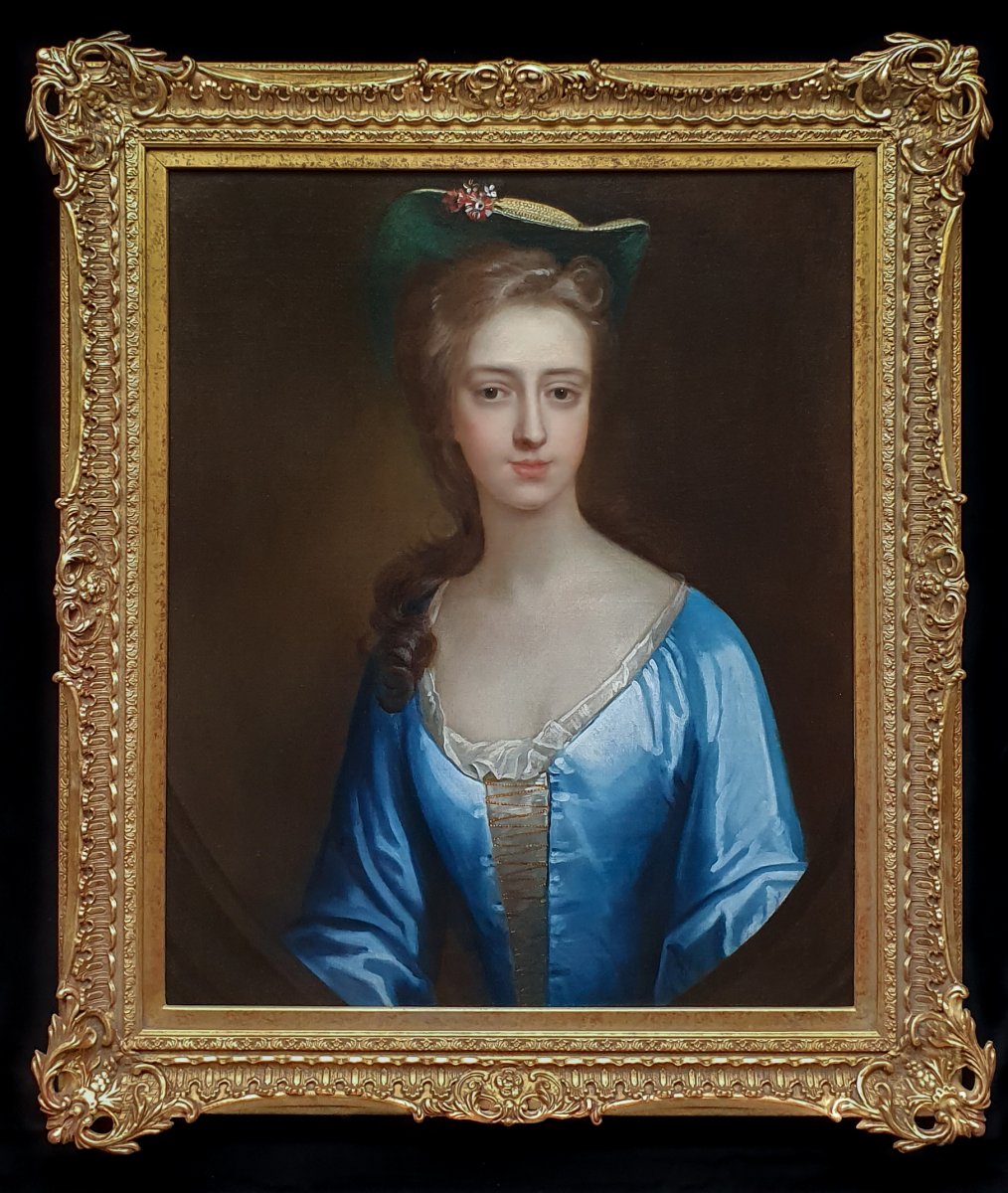
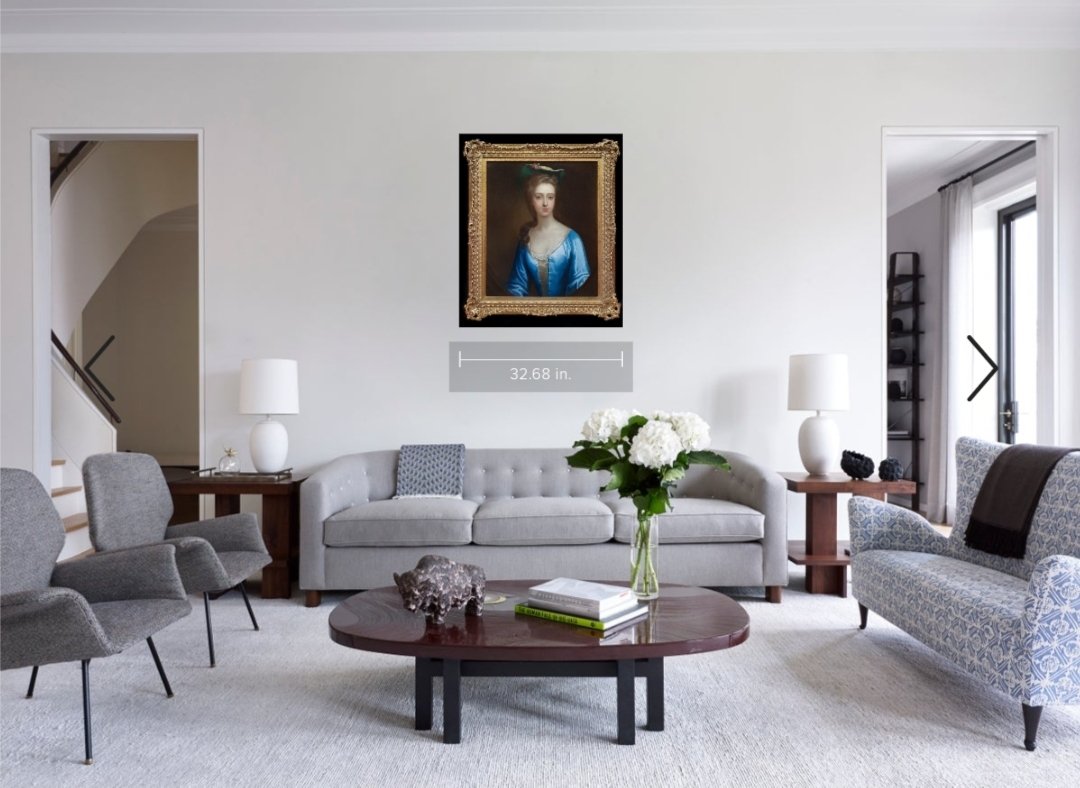


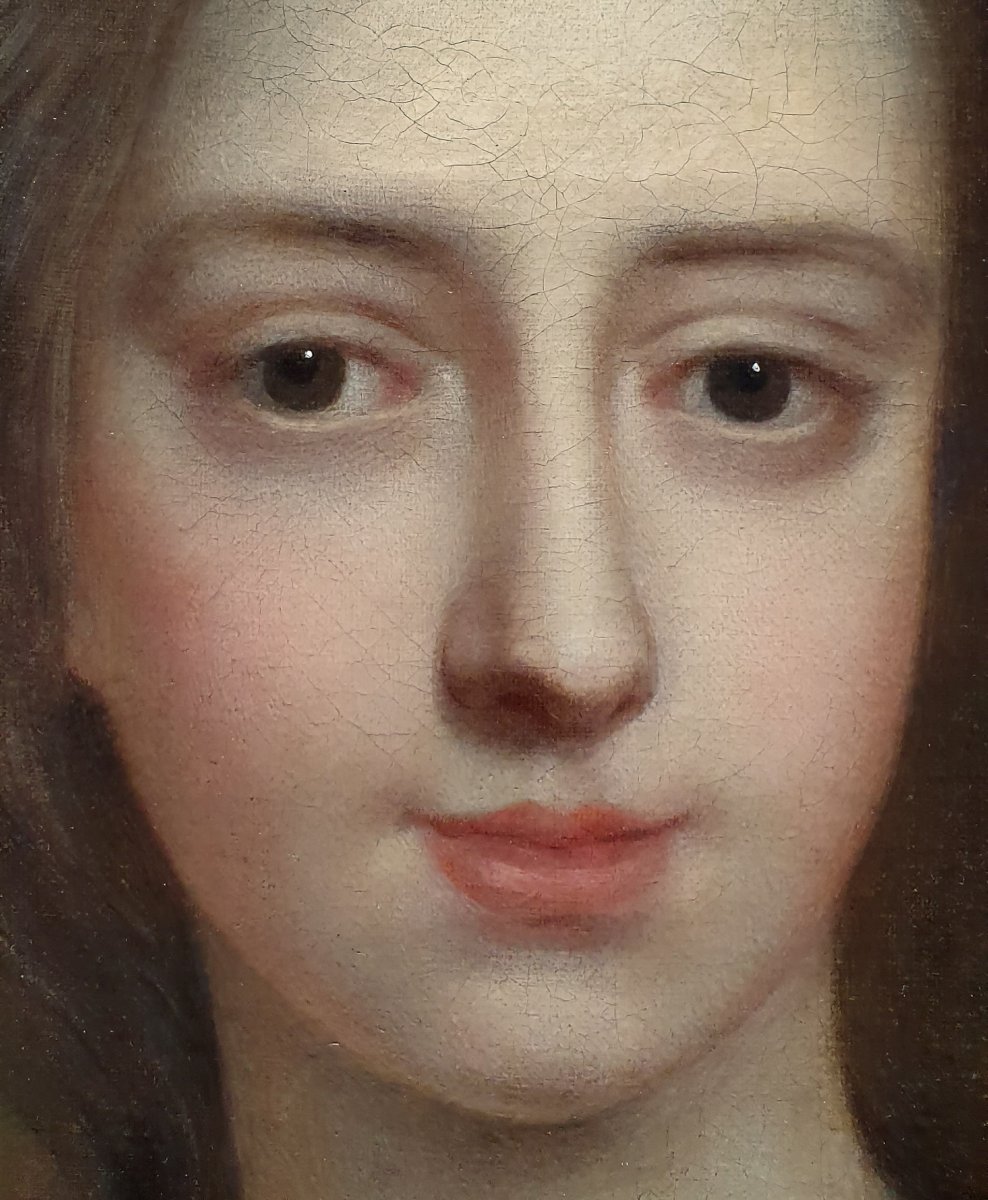

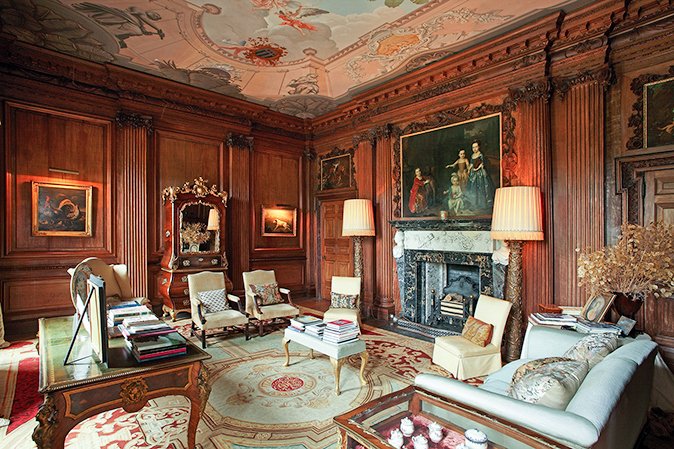

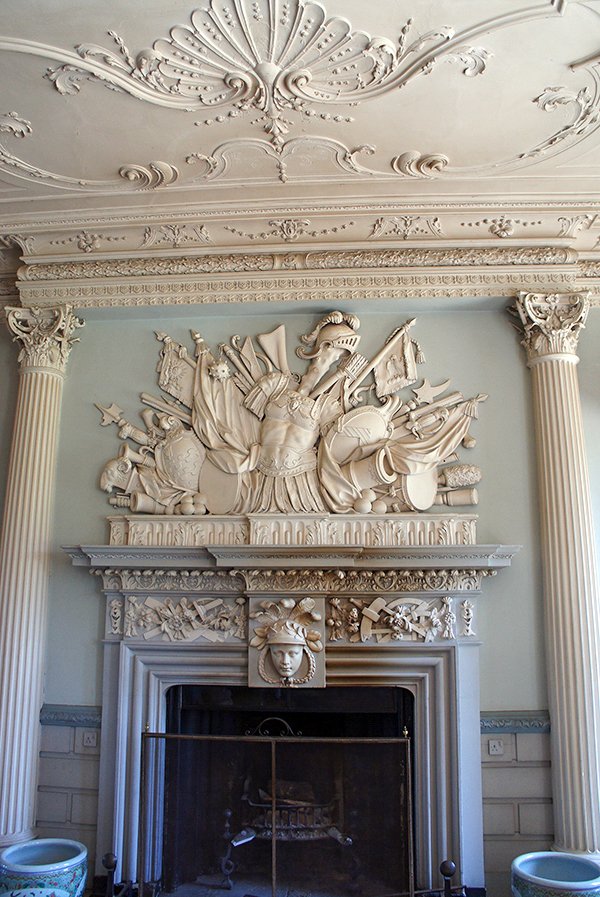
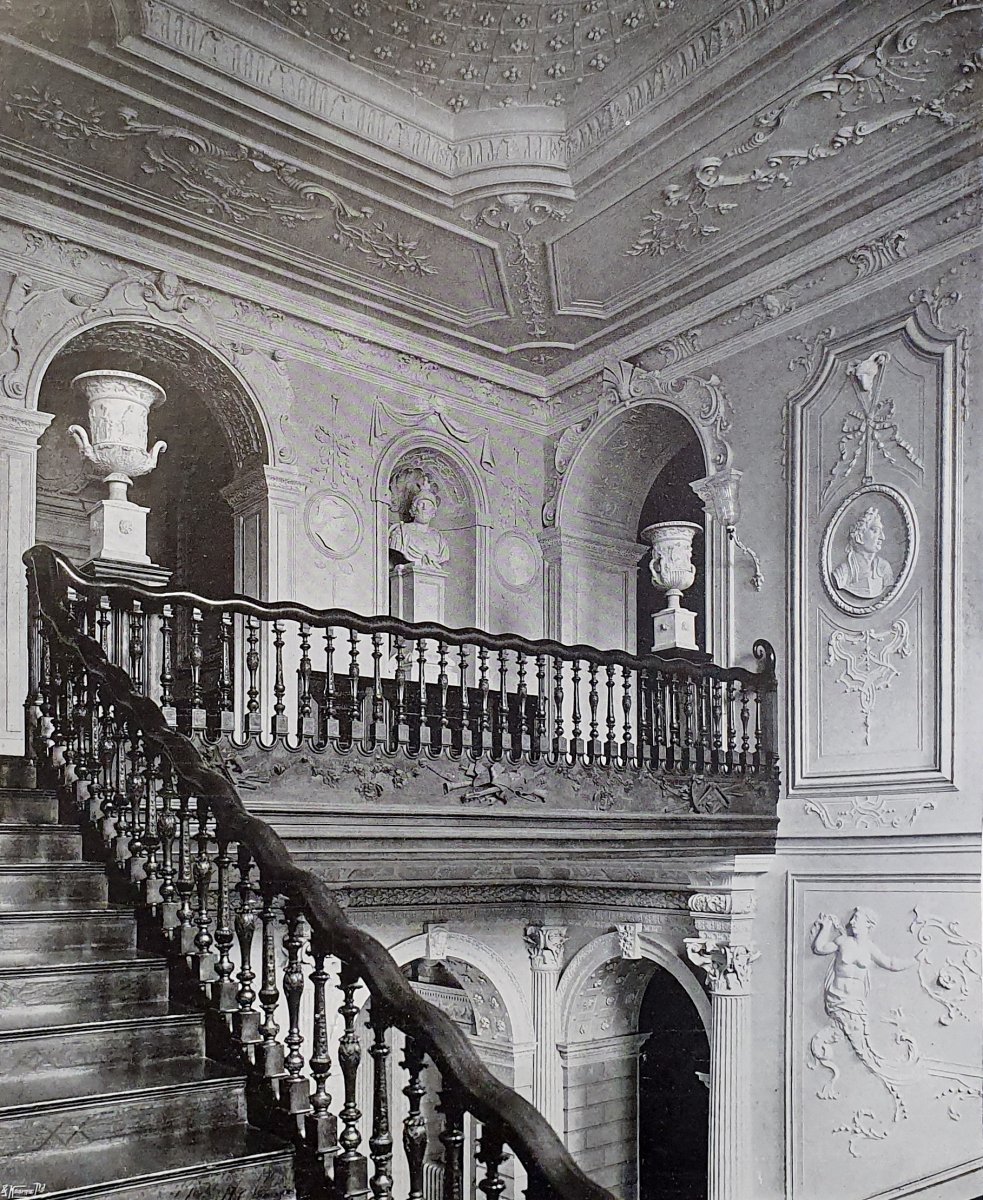











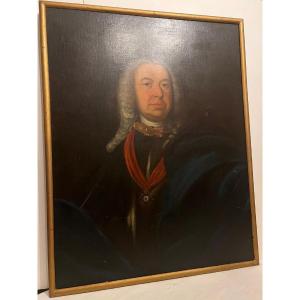



 Le Magazine de PROANTIC
Le Magazine de PROANTIC TRÉSORS Magazine
TRÉSORS Magazine Rivista Artiquariato
Rivista Artiquariato
